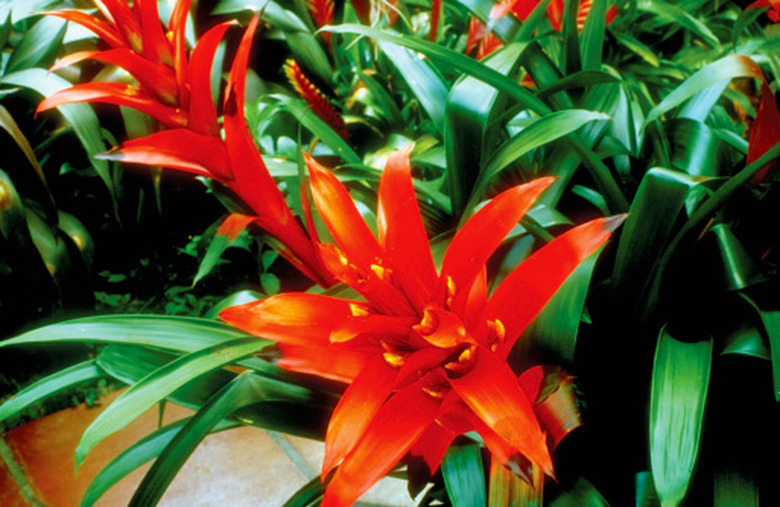How To Remove A Dead Flower From Bromeliad
Things Needed
- Clean, sharp pruning shears
- Liquid houseplant fertilizer
- Gravel
- Serrated knife
- Potting medium
- 4-inch pot
- Clear plastic bag
Most bromeliads take months to produce flowers, and some of them require years. While many enthusiasts don't mind awaiting the glorious day with anticipation, it's sad that these exotic plants typically only bloom once in a lifetime. There is adequate consolation, however: When the bromeliad's single bloom flush has run its course and the long-lasting flowers fade, many varieties continue to produce stunning foliage for quite some time. While the mother plant eventually dies after blooming, many new pups are left–often for the next year or two.
Step 1
Cut off the flower's bloom stalk with clean, sharp pruning shears. Remove it as close to the bromeliad as you can without injuring the plant.
Step 2
Give the bromeliad more lighting, if possible, and move it to the brightest spot in a warm room. The plant will appreciate all the light it can get while it's recovering from blooming and producing new pups. Don't expose it to direct sun. Keep daytime temperatures between 70 and 75 degrees Fahrenheit, 60 to 65 degrees overnight.
Step 3
Increase feeding frequency to once monthly for your bromeliad. While blooming has ceased, this plant is now expending a great deal of its energy producing new pups and foliage. Use a commercial liquid houseplant fertilizer diluted to half strength. Follow the packaging instructions carefully.
Step 4
Water the bromeliad enough to soak the soil until water begins to drain from the pot's holes. Don't water again until the surface of the soil feels dry.
Step 5
Provide some extra humidity for your bromeliad. Add 2 or 3 inches of gravel to a container and pour in enough water to nearly cover it. Set the plant on top of the gravel, but make sure the pot doesn't come into contact with water. Mist the foliage two or three times daily.
Step 6
Remove pups from the mother plant when they're about one-third its size. Use a serrated knife to make a clean cut between the parent and the pup. Add new soil to the pup's previous spot and transplant it to its own 4-inch pot.
Tip
If your healthy, mature bromeliad hasn't bloomed yet, you can force it to do so. Drain all of the water out of the plant's cup and seal it up in a clear plastic bag with an apple for about a week or 10 days. The apple will produce ethylene, which signals the bromeliad to bloom.
